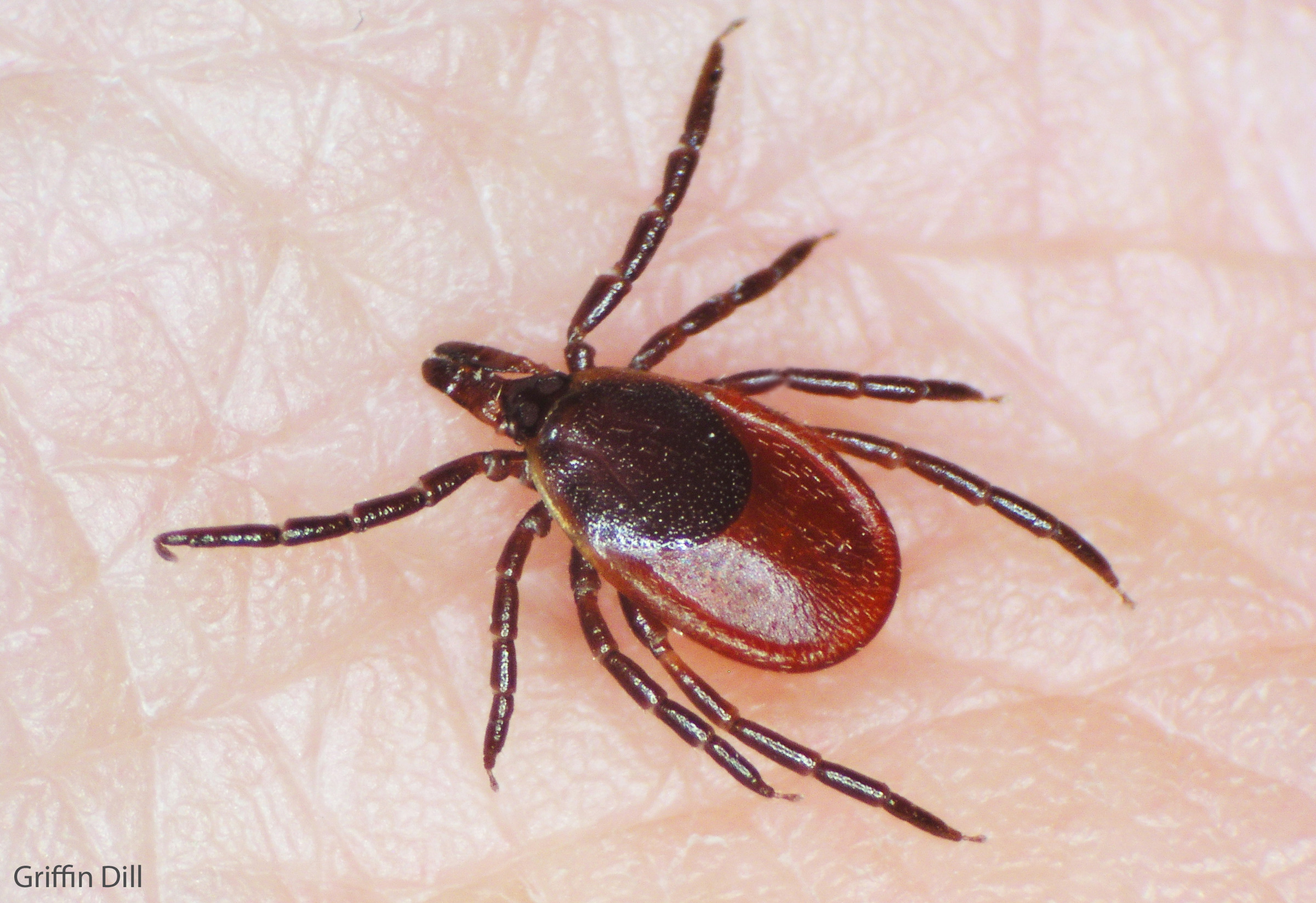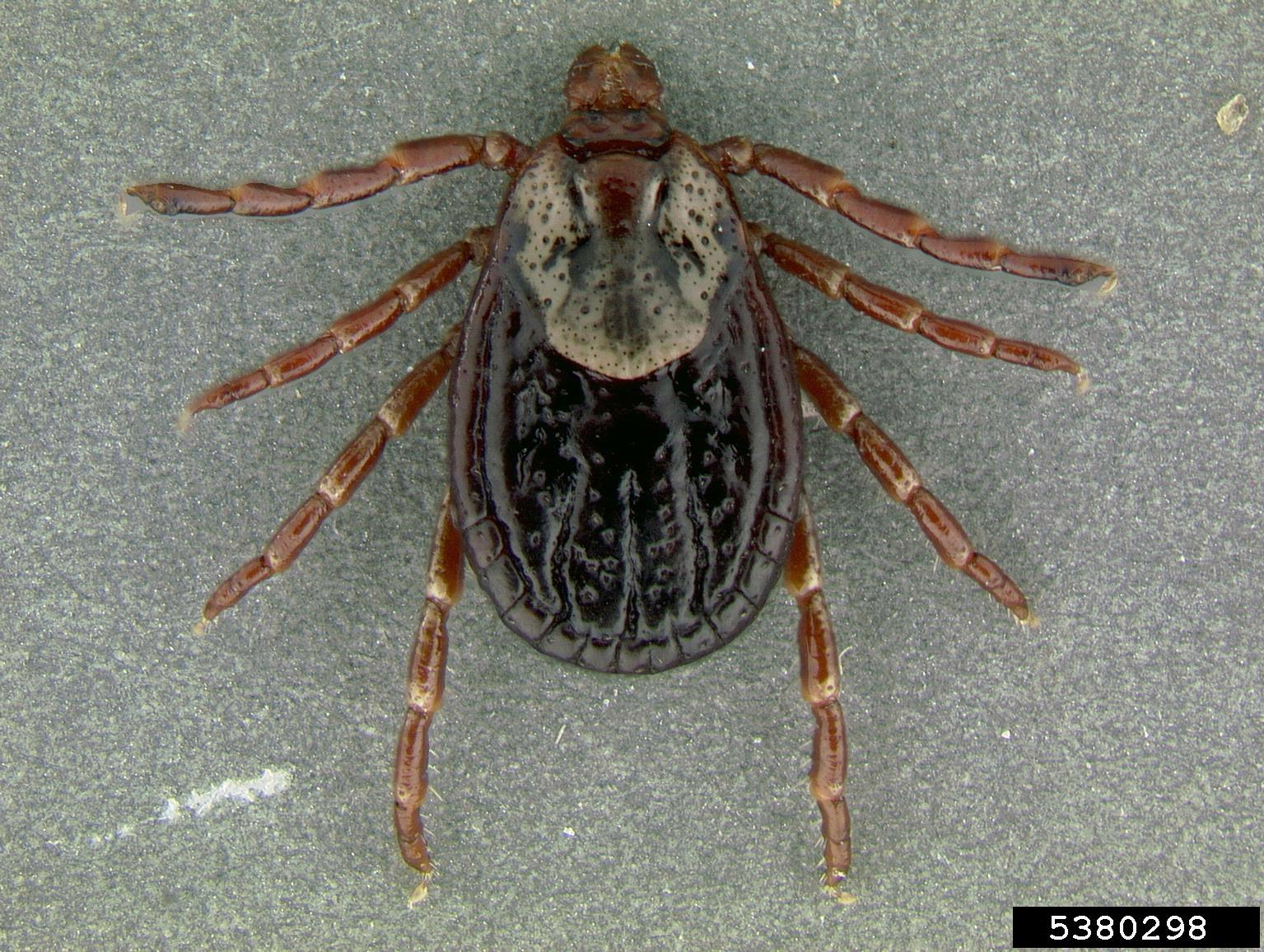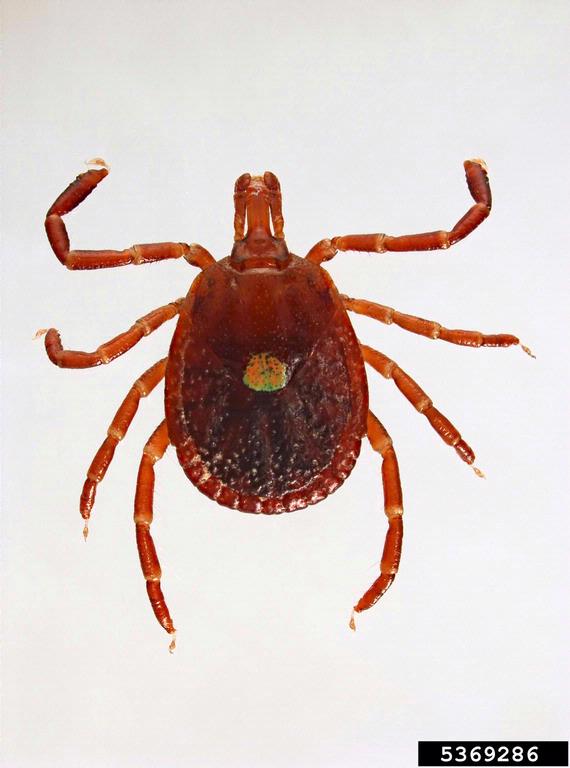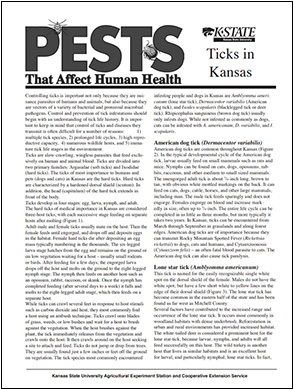Tick Time
Return to Home Insect Control articles.
Ticks have been active since early spring. When people refer to a bad year for ticks, they mean that winter conditions were not useful in reducing some of the tick population. In warm months we tend to spend more time active outdoors and that means you should be aware of how to prevent tick bites.
Common Species
We have three common species of ticks in Kansas:
- American Dog Tick
- Lone Star Tick
- Black-legged Tick (also called Deer Tick)



Deer Tick American Dog Tick Lone Star Tick
If you hear someone refer to “seed” ticks, they’re referring to juveniles of one of those species. While the tiny immatures are difficult to spot, they haven’t had as many hosts yet so the chance they’re harboring a disease is less. The different species carry different disease risks, so it’s best to promptly remove any ticks you do find on your or your pets.
Tick Prevention
Prevent ticks from climbing on you by using DEET on your skin or permethrin on your clothes and gear. Always follow chemical labels for proper recommended use. Light colored clothing makes ticks easier to spot as they crawl on your legs or arms. Reducing tall vegetation around commonly trafficked areas also reduces their habitat.
When you Find a Tick
If you do find a tick, carefully remove it. Make sure you don’t squeeze the main body while you firmly pull the tick off. Be sure to get all of the tick off and don’t leave any parts behind still attached, like the head.
Ticks and Disease
Many people want to get ticks tested for diseases when they find them. The CDC doesn’t recommend testing a tick to see if it has a disease for a few reasons: you could have also been bitten by a different tick, the results can take too long to get back to be effective, the labs may not be standardized, and most importantly a positive result in the tick does not mean you have been infected.
It is more effective and important to monitor for signs of illness including rash, fever, fatigue, headaches, muscle pain, and joint swelling and pain. Read more on CDC Tick Removal Recommendations. Always consult your medical care provider if you have been bitten by a tick and suspect an illness.
For more information:
 Download the K-State Research and Extension publication Ticks in Kansas for more information about the tick life cycle, prevention and keeping pets safe from ticks.
Download the K-State Research and Extension publication Ticks in Kansas for more information about the tick life cycle, prevention and keeping pets safe from ticks.